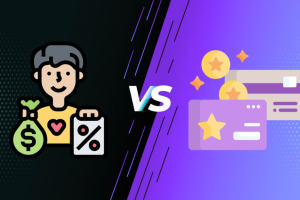Long gone are the days when dusty chalkboards and mounted pencil sharpeners were the latest tech in school. Even projectors, copiers, and laminators are old hat. Now, teachers and students have more avenues for improved learning than ever before thanks to modern technology. There are many tech tools available to help streamline learning in the classroom. These tools can improve student engagement, facilitate collaboration, and streamline administrative tasks for teachers.
Plus, this tech won’t just enhance your students’ learning experience. It can also reduce the amount of work you have to do as a teacher. Invest in these tech tools to help streamline learning in your classroom.
1. Interactive Whiteboards
While chalkboards may have been all the rage in the 1800s, times have certainly changed. Whiteboards largely replaced them throughout the ‘90s and the early 2000s. Now interactive whiteboards are doing the same.
Interactive whiteboards, or smartboards, provide the benefits of their older counterparts without all the hassle of erasing and managing physical material. Think of smart boards as large, sophisticated touchscreen monitors. They enable students to engage with lessons through multimedia interactivity, usually by using a touch pen input. Students can tap, draw, drag, and erase smartboard content as intuitively as writing with pencil and paper.
Smartboards do wonders for increasing student engagement. When paired with a screenshot app, you can pre-record important information for students to engage with in a fun and interesting way. Investing in an interactive whiteboard opens up countless doors of opportunity for classroom learning.
2. Video Games
You, like many educators, understand that education is an intrinsic element of growing a fledgling child into an adult member of society. Most kids, however, do not share this perspective. Most kids see learning and school in general as obstacles to overcome or endure to return to having fun. So why not leverage your students’ natural inclination for play and imbue it throughout your lessons?
Incorporating video games into your teaching toolkit taps into students’ innate desire for play and boosts engagement. These games offer immersive experiences that not only entertain but also educate. By integrating educational content into games, educators can create dynamic learning environments where students are motivated to actively participate and excel. Video games provide opportunities for problem-solving, collaboration, and personalized learning experiences, aligning with the diverse needs of students in today’s classrooms.
For instance, games like “Minecraft Edu” allow students to explore concepts in history, science, and mathematics through building and problem-solving within a virtual world. Similarly, “Kerbal Space Program” offers an engaging way to learn about physics and engineering by designing and launching spacecraft. “DragonBox” series is an example of how video games can make abstract concepts in mathematics more accessible and enjoyable for students. Gaming can completely change what it means to learn.
3. Learning Management Systems
Administrative work has to be one of the most frustrating and dull parts of teaching. You need to check class attendance, monitor homework completion, and assess student progress. These tedious tasks take time and energy away from what you’re actually here to do as a teacher: teach. Yet an unadministered class is an ineffective one.
Don’t subject yourself to drudgery any longer — employ a learning management system instead! This kind of technology makes administration tasks quick and simple. LMS software provides you with a streamlined way to create and deliver learning content and assess student participation and progress. Its tracking and reporting tools simplify numerical assessments for each student, such as in the case of testing. This gives you more space to focus on teaching and directly addressing the needs of each student.
LMS software is currently revolutionizing the education industry. Despite being data-oriented, they actually enable and encourage teachers to make their lesson plans more student-oriented. Consider using one if you feel like classroom administration eats away at your actual education practice.
4. E-books and Online Libraries
Affordability has long prevented many students from getting an education. Whether it be because of tuition, lunch money, or the price of books, finances too often get in the way of learning. Thankfully, e-books and online libraries are dramatically increasing student access to learning texts for the better.
You’ve probably heard of e-books before. They’re electronic or digital versions of traditional print books that can be read on devices like personal computers and mobile phones. The biggest benefit of using e-books is that they’re typically much cheaper than their print alternative. And though many classic textbooks are unfortunately not offered digitally, there are many e-book equivalents you can leverage instead.
The rise of e-books has been accompanied by the proliferation of online libraries. These are massive digital databases aiming to further increase accessibility to learning. Platforms like Google Books and Project Gutenberg host a wealth of free reading you can leverage as a teacher. Next time you’re drafting a lesson plan, consider using an e-book from an online library to increase class-wide learning accessibility.
Keep Learning
One of the best things about educational technology is that it’s still rapidly evolving. There are more ways to improve the education you can provide than ever before. Level up your own teaching by leveraging some or all of these technologies.
Not only does adopting new tech give your students a learning edge, but it can take the edge off your own responsibilities. That’s because most modern learning tech aims to benefit both students and teachers. So you can spend more time actually teaching and doing what you love. This way everybody wins — especially the generations of tomorrow.
Above are just a few examples of the tech tools available to streamline learning in the classroom. The selection depends on the specific requirements and goals of the teacher and students. It’s important for educators to explore and experiment with different tools to find the ones that best suit their teaching style and enhance the learning experience for their students.


